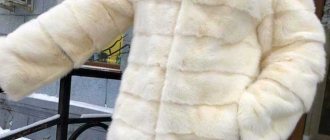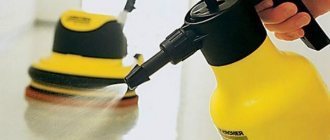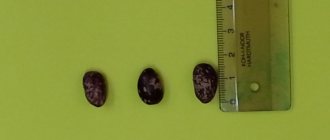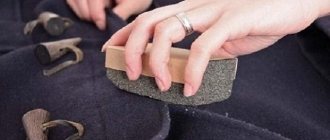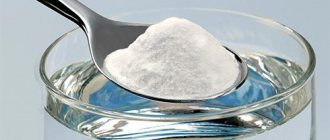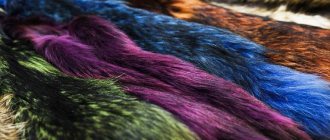Fur products are very popular among women, because they have an attractive appearance and complement the luxurious image of a modern lady. In the manufacture of fur products, both expensive skins of rare animals and artificial materials are used, thanks to which low-income people can afford such a wardrobe item.
In fact, no matter what material is used, the fur may begin to turn yellow and its appearance will leave much to be desired. How to make a fur coat as beautiful as the day you bought it, eliminating the yellowness? The easiest way to do this is to use the services of professional dry cleaners, but there are also a number of proven folk methods that allow you to do it yourself at home. We will talk about them in more detail in this article.
Why does fur turn yellow?
Firstly, it comes from old age. Without nourishment, fur hairs lose their pigment, and precipitation and bright daylight accelerate this process.
- The yellowness is distributed unevenly: first the guard hairs lose color, and a little later the undercoat.
- Not only white furs are susceptible to yellowing, but also arctic fox, silver fox and sable.
Dust, sweat, dirty sediments and cosmetics are gradually absorbed into the structure of the hairs and spoil the appearance of the fur. Therefore, it is important to regularly pay attention to a fur coat, hat and fur collar in order to remove dirt in a timely manner.
Look at the photo of the yellowish fur, how unattractive it looks.
Tips for storing and caring for fur
You can increase the service life of these delicate products only if you follow the basic rules of their operation. For this, experts recommend:
- Hang blue mink items in a closet in a linen bag. It is strictly forbidden to use plastic bags; the product will begin to fade and the pile will become brittle.
- Store fur coats in a dry, cool, dark place. High temperatures, humidity and sunlight cause lint to pill and deform the garment.
- Fur clothing should be hung separately from items made from other materials, as natural fabrics quickly and permanently absorb any foreign odors.
- In the fur item and the room where it is stored, put products that will protect the product from moths. These can be either bags with special herbs or professional preparations (for example, Antimol).
- Avoid getting cosmetics on fur items. The clothes will turn red, become shiny, and it will be impossible to return the item to its original appearance.
- When traveling, do not carry products in suitcases or bags.
- Once every 30 days, ventilate the fur coat and its storage area. The procedure will help prevent the appearance of moths and other harmful insects.
- Do not dry fur items with heating devices. If water or snow gets on them, the product should dry naturally.
- If you regularly wear a mouton fur coat, clean it once a year; if the item is used infrequently, then it is allowed once every 2 years.
Before storing a wardrobe item, you need to clean it with soapy water. Housewives advise using Biofur soap. It must be diluted with water in a 1:1 ratio, apply the resulting product to the surface of the product, after 5 minutes, rinse off the remaining substance with a damp towel. Dry the fur coat naturally, hang it on a hanger and put it in a suitable room.
Semolina and flour
This product is widely used for cleaning fur and down scarves. The method is simple, cheap and effective. Cereals remove dust, dirt and grease.
- The fur coat or collar should be laid out on a horizontal surface and semolina should be sprinkled in an even layer.
- To clean the hat, you will need to put it on a three-liter jar wrapped in a towel.
- After this, you need to carefully comb the fur with a soft brush until the rump turns gray.
- If the color is not restored, you need to repeat the procedure with a new portion of semolina.
- Shake the product to remove grains. You can also use a vacuum cleaner at low power.
Instead of semolina, you can use flour, but first heat it in a dry frying pan. Work with flour until it darkens. Then use a new portion.
Causes of yellow spots and fur resuscitation
There are several reasons for the appearance of white spots:
- Weather. The fur turns yellow because it does not like dampness (rain and snow). When precipitation dries, it leaves yellow marks on its hairs.
- Improper storage in autumn and summer. The fur needs to be cleaned and aired.
- The fur hat and collar touch the face and are soaked with sweat, foundation and nourishing fatty creams.
But yellow spots also appear on new fur skins that have been stored for several years. The reasons for this most likely lie in improper storage, lack of ventilation, and high humidity in the room. For minor manifestations of yellow color, first use non-aggressive home remedies, such as semolina, starch, wheat bran, and only in case of serious changes use detergents, gasoline, ammonia. To clean a fur product you will need a clothes brush and a sheet. The most harmless and simplest method of dust removal is:
- The wet sheet is wrung out and placed, leveling, on the table surface.
- The product is placed on it with the pile down.
- The fur is lightly beaten using a carpet beater.
- Clean the product with a clothes brush.
If the fur coat has turned yellow, the pile is first cleaned and renewed at home without aggressive helpers, using soda, starch, chalk and semolina:
- The product is placed face up.
- Sprinkle homemade cleaner powder evenly over it, rubbing a little into the fur.
- Clean with a clothes brush.
Cleaning with sawdust, wheat bran:
- Sawdust or bran is heated in a frying pan.
- Sprinkle on the product, rub in with your hands or a brush.
- Shake off cleaning products.
Attention! Sawdust obtained from coniferous trees should not be used for cleaning fur products. Their resin will irrevocably ruin an expensive item.
Starch
How else can you clean white fur from yellowness? Starchy substances perfectly clean and refresh the color of fur. The product is laid out on a horizontal surface, starch is poured on top in an even layer (through a strainer).
A solution of water and detergent is poured into a spray bottle and the fur is sprayed. When the hairs are dry, carefully comb the hairs with a clothes brush.
Another effective remedy is to clean furs with a mixture of starch and refined gasoline. The ingredients are combined to form a paste, applied to the yellowed areas and left to dry. Then simply remove the starch with a clothes brush.
Methods for removing dirt and yellowness
As a rule, a yellow coating is noticeable on light-colored fur collars. Experienced housewives who have items with similar finishes in their wardrobes know how to clean an arctic fox or mink collar at home using household products.
Note. The methods for cleaning the fur of arctic fox, mink and rabbit are similar to each other, therefore they are applicable to any type of finishing and are safe for them.
Before you start cleaning faux and natural fur, you need to prepare:
- unfasten the collar from the hood or from the throat area;
- shake the pile and spread it on a flat horizontal plane, for example, on a table or floor;
- to avoid staining the work surface, cover it with newspapers or cover it with cellophane film;
- Prepare everything you need for cleaning and place it nearby: a container of water, basic cleaning agent, a sponge or cloth, a soft brush or a fine-toothed comb.
Attention! If you want to wash the fur from a down jacket at home, then know that this cannot be done, since the wool will become wavy and take on a dull shade. Remember to remove the trim before washing your outerwear.
Wood sawdust
It is enough to take 100 grams of small shavings and sprinkle generously on the fur trim of the jacket. If there is no sawdust in the house, you can replace it with dry bran. Procedure:
- Rub the substance deep into the pile with your hands, as well as along the entire length of the wool.
- Leave the sawdust on the product for 10 minutes. The wood will absorb grease and old plaque.
- Turn the collar fur side down and shake it to remove any shavings.
- Then return it to its original position and comb the pile with a brush.
Potato starch
It is believed that it is better to use potato starch, but the difference compared to other types is insignificant. The principle of operation of this method is similar to cleaning with sawdust, but for greater effect it is recommended to heat the starch in an enamel or aluminum pan for 5-10 minutes. To prevent the product from forming lumps and burning, you need to stir it all the time.
Procedure:
- Sprinkle the collar with warm substance and rub into the fuzzy part.
- Brush the fur in different directions, then turn it over and shake out the white crumbs.
- Now comb the product again.
Flour and gasoline
This method is suitable for old dirt and stubborn stains:
- Pour 3 tbsp into 200 ml of purified gasoline or kerosene. flour and mix thoroughly until smooth.
- Apply the composition to the pile, distributing it evenly along the entire length.
- Comb in different directions. It is important that the white mass penetrates to the very base of the coat.
- Leave the flour mixture for 15-20 minutes, during which time it will harden slightly.
- Then remove the main part of the composition with a brush. Iron the fur so that the paste dries completely and falls off when you shake the collar.
Salt, hydrogen peroxide and alcohol
Salt and alcohol:
- Add 1 tbsp each of salt and alcohol to a glass of warm water.
- Stir and pour into a spray bottle.
- Treat the down jacket trim with the solution and wait until it dries completely.
Hydrogen peroxide is well known for its whitening properties:
- Dissolve 2 tbsp. peroxide in a glass of water.
- Pour the liquid into a spray bottle and spray the fur.
- Now all that remains is to wait until it dries.
Laundry soap
It copes well with recently formed plaque:
- Grate 1/3 of the bar on a fine grater and add to 0.5 liters of warm water.
- Shake until foam forms.
- Soak a sponge in the soapy water, squeeze out excess liquid and gently run over the pile.
- After treating the entire length of the product, change the water to clean water and rinse the sponge thoroughly.
- In the same way, you need to remove the cleaning agent from the collar.
- Comb it and wait until it is completely dry, and then iron it.
Hair dye
You can get rid of yellowness on a product by completely changing its shade or slightly updating it. High-quality hair dye will help you with this:
- Choose a color that you like and matches the jacket.
- Follow the instructions on the package.
- After dyeing, rinse the fur thoroughly using a shower head.
- Then let the collar dry naturally.
Note. The fabric lining of a fur collar also requires periodic cleaning. It should be treated with soapy water using a sponge.
Salt and ammonia
For cleaning, prepare a mixture:
- Alcohol - 1 tsp;
- Salt - 3 tsp;
- Water - 500 g.
The finished mixture is applied with a spray bottle, distributed over the hairs using a clothes brush and left to dry.
Can I wash it at home?
Do not soak, wash by hand or in an automatic machine, or clean with detergents; this will damage the product. Dry clothes at room temperature; using a hair dryer is not recommended. To remove minor dirt, use a soft-bristled brush. Clean the pile with a low-power car vacuum cleaner or hair dryer.
Before using the products, try cleaning the jacket by knocking it out. Hang the clothes on a hanger, cover with a damp cotton cloth and beat out. In winter, the product is cleaned with snow: the item is placed pile side down and knocked out (the method is suitable for environmentally friendly regions).
Wet cleaning with home remedies
Washing solution:
- To treat the product, use detergent for cats/dogs, since it contains substances against the appearance of yellowness.
- Dilute a little shampoo in warm water, then use a soft sponge to apply the solution to problem areas along the hair growth path.
- Instead of pet shampoo, you can use white liquid soap.
And to enhance the whiteness effect, add a couple of tablespoons of hydrogen peroxide to the water.
How to clean fur?
To easily deal with the problem, use one of the following tools:
- brush for cleaning clothes;
- sponge;
- cotton swabs or disks;
- blue;
- flour;
- petrol;
- liquid ammonia;
- washing powder for delicate washing;
- wheat bran;
- chalk;
- hydrogen peroxide;
- sawdust;
- shampoo for bathing pets;
- semolina;
- potato starch;
- detergent.
Blue
The effect of whiteness is obtained by displacing a yellow tint with blue pigment. To make a working solution for processing furs, just a couple of drops of blue in a bowl of water is enough. Make sure that the solution turns out to be a soft blue shade.
On a note! Fur should not be soaked in excess with the solution, as it may become damaged.
You need to lay the product on a horizontal surface and treat the fur with a spray bottle. Then the fur coat is allowed to dry. The final stage is combing with a brush.
How to clean faux fur?
Faux fur is a pile material that resembles natural fur. But taking care of him should be completely different. If it's dirty and you want to get it back into shape, use the tips below.
Solution 1
- Take two tablespoons of washing powder.
- Dissolve the powder in 1 liter of warm water 20-30 degrees, mix and beat into foam.
- Hang the product on hangers.
- Take a brush and dip it into the solution.
- Apply the mixture with a brush in the direction of the pile.
- Take a towel.
- Blot the product.
- Hang the fur to dry.
- Comb the fur.
Vinegar
How to remove yellowness from fur using vinegar?
- The vinegar solution returns the fur to its original color and shine.
- Take 9% or 6% vinegar, soak a cloth or cotton swab in it, and wipe the yellowed areas.
- To remove the smell of vinegar, the fur coat is hung on the balcony.
When to turn to professionals
The approximate service life of rabbit fur clothing is 4 years. Dry cleaners do not accept fur items older than this period.
Contact your dry cleaner if:
- the above tips do not help;
- outerwear or other large items are dirty;
- old stains of fruit juices, wine, coffee, foundation were found on the items;
- dirt was found on fur boots.
When choosing a dry cleaner, do not skimp on the cost; first read the reviews online.
To prevent the formation of stains, properly care for fur products. By the end of the season, things are cleaned and put in a closet, outerwear is hung on hangers, and covered with a cover. Contaminants are removed in a timely manner; do not wash, iron, straighten fur with fine-toothed combs, or dry things near heating appliances. Proper care will extend the life of the product.
Blog author. Experience in the field of cleaning services - 11 years. I love cleanliness and order in all areas of life. Beloved wife, mother of 3 children and attentive housewife. I have tried in my practice all the methods listed on the site. glad to meet you



